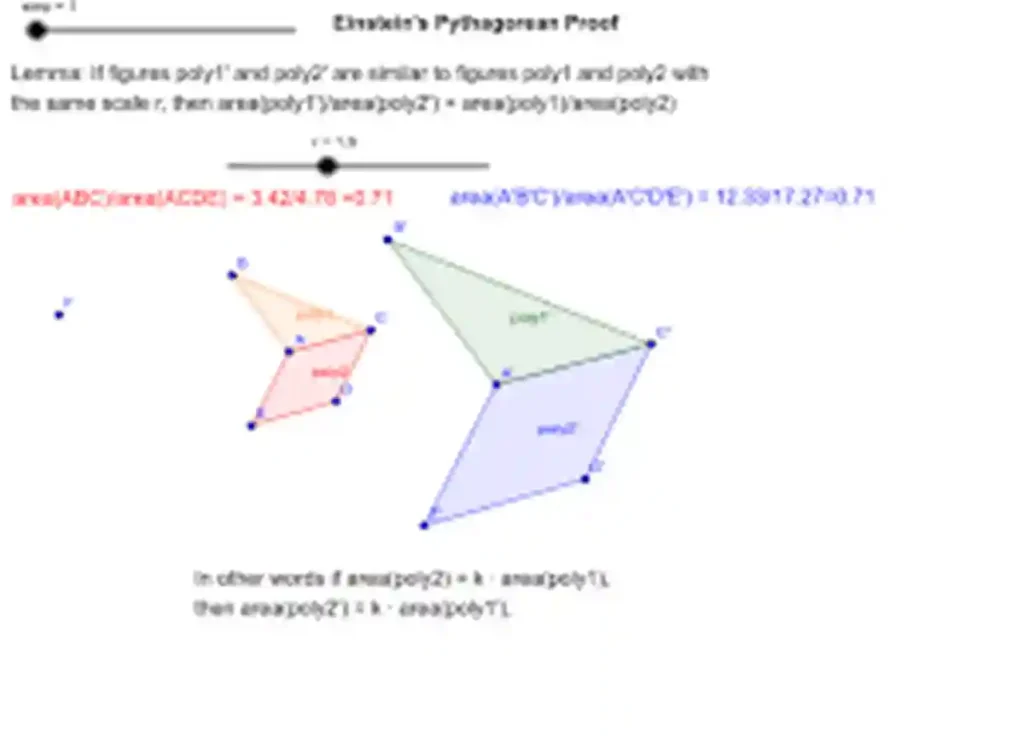Unveiling Einstein’s First Proof – Exploring the Groundbreaking Mathematical Journey that Defined a Legend” On the 26th of November 1949 Albert Einstein published an article published in The Saturday Review of Literature in which he wrote about two crucial moments of his early years. The first was the compass that his father gave him when he was just four or five.
Einstein remembered his marvel that the needle turned north regardless of what appeared to be driving it to that direction. He reached the conclusion, right at that point, about the nature of the physical world:
“Something deeply hidden had to lie behind the objects.” A second incident came shortly after he turned twelve years old, when he was presented with “a tiny book on Euclidean planar geometry.”
This book’s “lucidity,” he wrote–the concept that a mathematical statement could “be established with enough certainty that doubt seemed to be beyond question”–provoked “wonder that was of completely different kind.” Pure thinking could be as effective as geomagnetism.
Also Read: Unraveling Infinity: Exploring the Fascinating World of Infinities Are Bigger Than Others
The month we are in, is when we commemorate the 100th anniversary of Einstein’s general theory of relativity, which was one of his many theories which brought clarity to the previously obscure.
With all the hype and hype, it would be great to know the details about what Einstein actually did and how he achieved it. It turns out to be an impossible task, since general relativity can be incredibly complicated.
Arthur Eddington –the British astrophysicist who headed the team that proved Einstein’s predictions during an eclipse of the sun in 1919, was inquired if it’s real there were only 3 people around the world could comprehend the concept, he replied that he knew nothing.
Also Read: Free Mathematical Mindsets By Jo Boaler
“Don’t be so humble, Eddington!” his asker told him. “On contrary” Eddington replied. “I’m trying to figure out who the third person could be.”
We are fortunate to be able to look at a simpler, earlier illustration of Einstein’s thinking. Before he was even given the small geometry book Einstein had been taught about the topic through his father Jakob who was an engineer.
Einstein was particularly fascinated by his understanding of the Pythagorean theorem and–“after considerable effort,” he noted in the Saturday Review–he came up with an own proof mathematical.
It is my goal to guide you through the proof step by step. It’s Einstein’s masterpiece and definitely his most obtainable one. This tiny gem of logic is a precursor to the man he would become in terms of style, scientifically and emotionally.

His innate symmetry-seeking instinct and his economics of means and his iconoclasm, his determination, his love of thinking through pictures — they’re all in this book, like they are as part of his relativity theory.
You might have once memorized the Pythagorean theorem by a series of symbolisms: a2 + = c2. It pertains to right triangles, which are triangles with an angle of right (ninety-degree) angle at one of their corners.
The theorem states that If the lengths of a and b are the lengths of the sides of the triangle (the sides that join at an angle of right) and b is the circumference of the hypotenuse (the side that is opposite to the right angle) is determined by the number c in accordance with the above formula.
Also Read: Unveiling the Genius Within: A Compelling Journey Life Inspired Shaped by Unexpected Inspiration
Teenagers are taught this principle into their heads by the millions each year in all schools across the globe However, most of them do not think about it. Perhaps you didn’t also.
When you do, however it’s when the questions begin to pop up. What’s the truth behind it? What is the way anyone came up with this idea? Why?
For an answer to the last question, take a look at the etymological roots of the term geometric. It is derived of it’s Greek roots of g_e (meaning “earth” as well as “land”) as well as the word metria (“measurement”).
It’s easy to envision ancient peoples as well as their monarchs worried about the measurements of plots or fields of land. Officials had to determine the amount of tax that was required to be paid as well as the amount of water they’d require for irrigation, and the amount of barley, wheat and papyrus farmers could yield.








